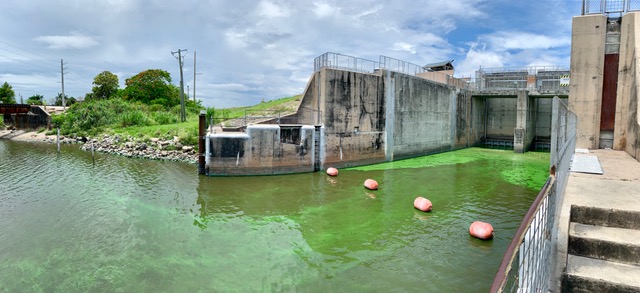The Everglades’ Forgotten Northern Estuary
By: Lake Worth Waterkeeper

By Reinaldo Diaz, Lake Worth Waterkeeper
In South Florida, we have fundamentally reshaped nature. Now our challenge is righting the wrongs of the past.
As the Lake Worth Waterkeeper, I know this all too well.
Lake Worth Lagoon is now an estuary, the tidal mouth of a river, where the ocean meets the stream. Many don’t realize how this came to be.
A little over 100 years ago, the Lake Worth Lagoon was a freshwater lake, considered the northern reach of the Everglades. Our lagoon was connected to the Greater Everglades System through underground aquifers and wetlands. Historical records describe freshwater springs located in what is now the Lake Worth Lagoon. Occasionally, the Atlantic Ocean would break through the barrier island, creating a temporary natural inlet.
Settlers realized the commercial potential for boat access, which would allow them to avoid portaging boats over the beach dunes and barrier island.
The settlers attempted to cut a permanent inlet in the mid-1850s. Years later they succeeded. Around the same time, they built a massive system of canals to drain the northern Everglades for homes and farms.
That’s when our lagoon’s connection to the Everglades was replaced with a system of canals, which now feed fresh water to our lagoon. The lagoon immediately became a saltwater coastal estuary.
We kept on remaking nature over the next century, building the Atlantic Intracoastal Waterway in the early 1900s, connecting the chain of lakes running along the coast. Soon after, settlers built another inlet on the south shore of the lagoon in an attempt to promote better tidal flushing throughout the lagoon.
That’s why the Lake Worth Lagoon today is a coastal estuary; a man-made suburbanized mangrove and seagrass system, where 81 percent of the shoreline is sea wall, with salinity levels heavily influenced by releases from Lake Okeechobee and local basin runoff.
Just because our lagoon is man-made doesn’t mean it’s insignificant or unworthy of our stewardship and protection. All those engineering projects didn’t change the fact that the Lake Worth Lagoon always has been and always will be a part of the Everglades.
Its role in the Greater Everglades ecosystem is the only thing that changed.
The question for today’s engineers and policymakers is, having made this ecosystem — now home to bottlenose dolphins, manatees, four types of sea turtles, smalltooth sawfish, two types of whistling ducks, and nesting American Oystercatchers — how can we best protect it?
Over the last thirty years, we’ve been finding answers.
Experiments with artificial reefs in the lagoon that started in the 1990s have been largely successful, providing habitat for snook and bonefish.
The Palm Beach County Environmental Resources Management department has also been building mangrove islands. This is worthy work. Having engineered the lagoon into a mangrove estuary, we’re now nurturing it. It’s also an object lesson: If the county can do it, the state and federal governments could too.
Finally, the South Florida Water Management District and the Army Corps of Engineers, which control the levels at Lake O through a series of spillways, significantly lowered Lake O before this year’s rainy season in an attempt to avoid toxic discharges that have plagued the northern estuaries in the past.

Because of that experiment, the two government agencies haven’t had to discharge Lake O water into the lagoon for weeks, sparing us from Lake O water contaminated with a cyanobacteria bloom.
That’s a good thing.
The Lake Worth Lagoon is 21 miles long and surrounded by 1.5 million people. Florida’s sugar barons blame leaky septic systems for the cyanobacteria blooms that have been plaguing the state. Those claims ring hollow here: Despite all the urban runoff we get, all the leaky sewer systems and poorly maintained septic tanks, and despite some of the highest population density in South Florida, the Lake Worth Lagoon never has cyanobacteria blooms until we took in Lake O water, as we did three years ago.
The Lake Worth Lagoon isn’t the only man-made habitat we must care for. This type of system affects all of South Florida. Overdevelopment and our addiction to fossil fuels have also changed our climate, as I was reminded recently when it hit 107 degrees on the lake while I was out sampling.
Like so much, the Lake Worth Lagoon as it was 150 years ago is gone, never to return. But what’s here is vital, thriving, essential to more than 100 species that call it home, and well worth protecting.
*Feature image: Lake Worth Lagoon, Jewell Cove, a living shoreline project Lake Worth Waterkeeper maintains.